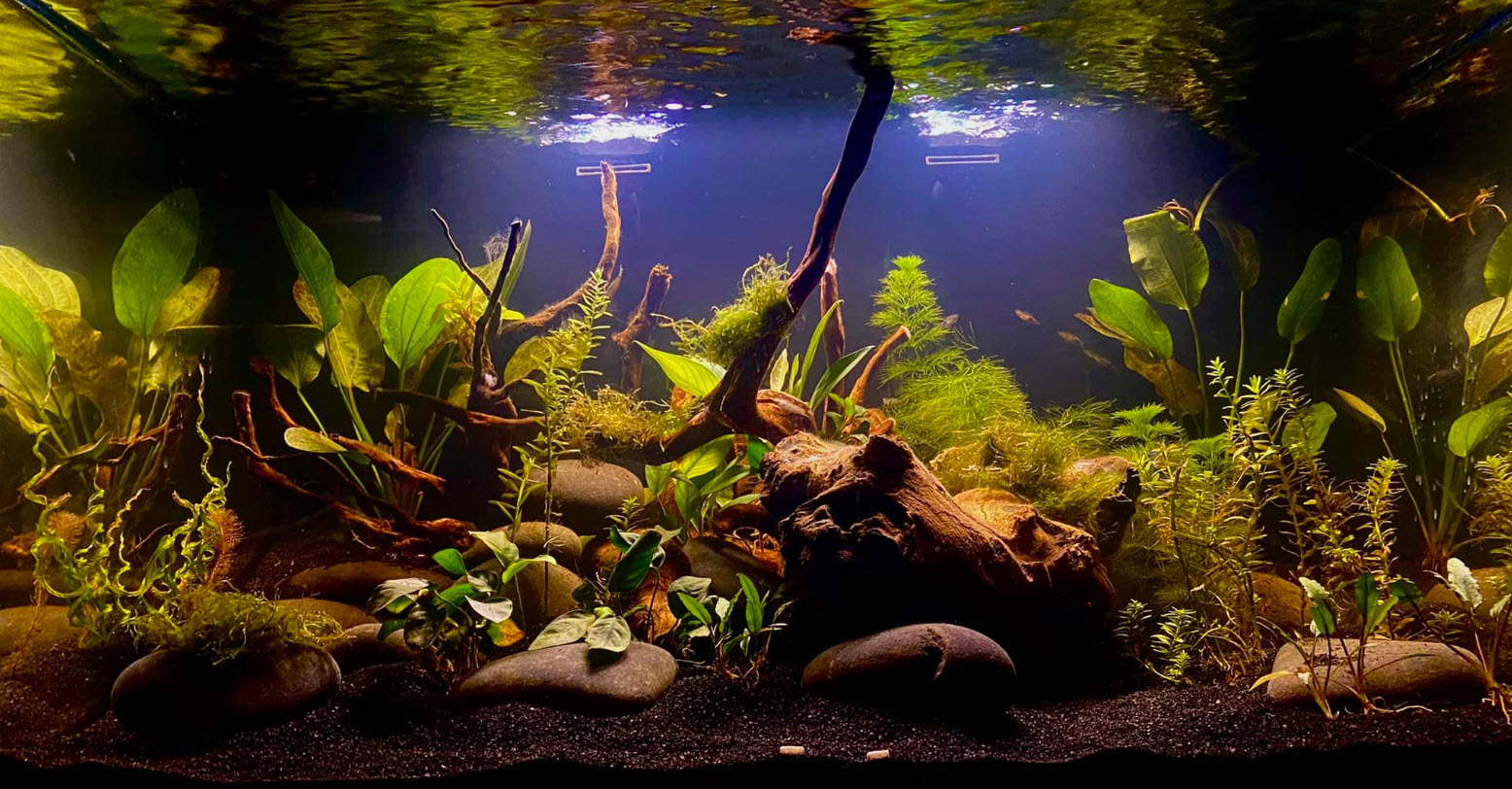
Summary of Blackwater
The term “blackwater” refers to soft, acidic water which is deep brown in color, like clear tea. The dark brown color is due to humic organic acids in the water. Many river systems of northern South America including the Rio Negro and the Orinoco have blackwater. Some streams and swamps in Southeast Asia also have this blackwater.
This is a very long and boring article on blackwater. It is only for real aquarium nerds like the author.
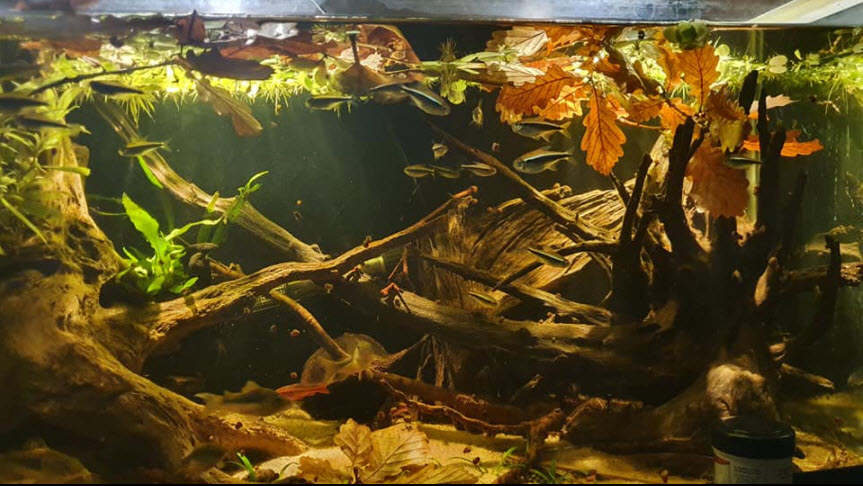
What is Blackwater?
Blackwater is not dark because of “tannic acid”. “Tannic acid” is a term which hobbyists (and some researchers!) use when they technically mean a “tannin”. Tannins are polyphenolic organic acids found in certain plants like oaks and redwoods. There are probably several thousand “species” and variations of tannins.
Blackwater is is dark due to humic and fulvic acids. Humic and fulvic are generic names for literally trillions of types of phenol rich black and brown organic acids which come about when plant matter decomposes under acid conditions. A better term for both humic acid and fulvic acid is “humic substances”. Black Kow composted cow manure is largely black humic substances as is mushroom compost.
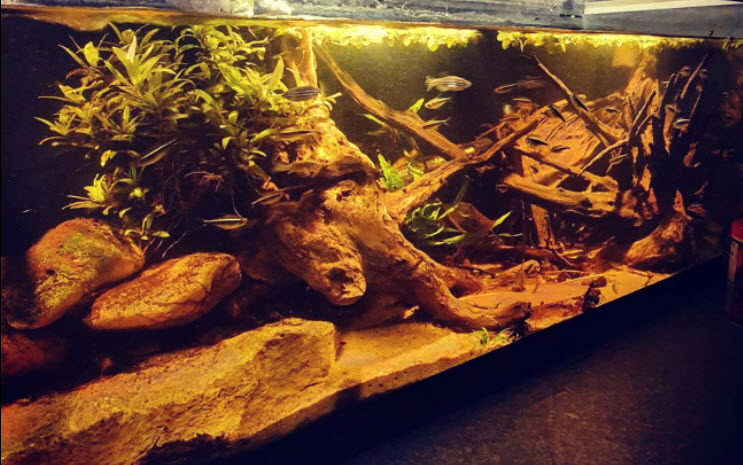
How “Blackwater” Forms
Blackwater is a very misunderstood phenomenon. Many think that tannins color the water and that the tannins come from the leaves of tropical trees and make the water brown. They claim that the blackwater rivers are from areas which flood the surrounding vegetation and the tannins in the leaves of the flooded vegetation create the brown color. This claim seems reasonable, and so it will doubtless surprise many that it is completely incorrect!
Due to a pervasive myth, they also claim these tannins in blackwater kill bacteria and are thus important. The actual story is almost exactly the opposite.
Blackwaters come from areas of sandy sediments that have little in the way of sodium, potassium, calcium, or magnesium to give to the water column. Because there is very small amounts of these minerals in the water bacteria can’t thrive (bacteria can’t retain these minerals in their bodies). But the fish from these “black-water” biotopes have specialized gills which are super-efficient at keeping these minerals inside the fish, so they can live in blackwater.
These fish species are discussed in this article:
17.3. Blackwater Fish

Because bacteria can’t thrive the breakdown of vegetable matter takes an abnormal course. Instead of the breakdown products of vegetable matter being carbon dioxide and water the breakdown products become humic and fulvic acids. These are brown organic acids that color the water brown. So the water is brown because there are no bacteria, not the other way around (“Ionoregulation in Tropical Fishes from Ion-poor, Acidic Blackwaters”, Gonzalez, et. al. 2008).
I even heard from a researcher doing his masters thesis on blackwater and he confirmed this mechanism.
Just for the record, humic substances are harmless to bacteria and even tannic acid has to be in incredibly high concentrations (>2,000 ppm) to kill bacteria. Note tannic acid can negatively affect fish at 40 ppm (i.e. VERY dark). This topic is explored in more depth in this link:
12.4.1. “Natural” Medications
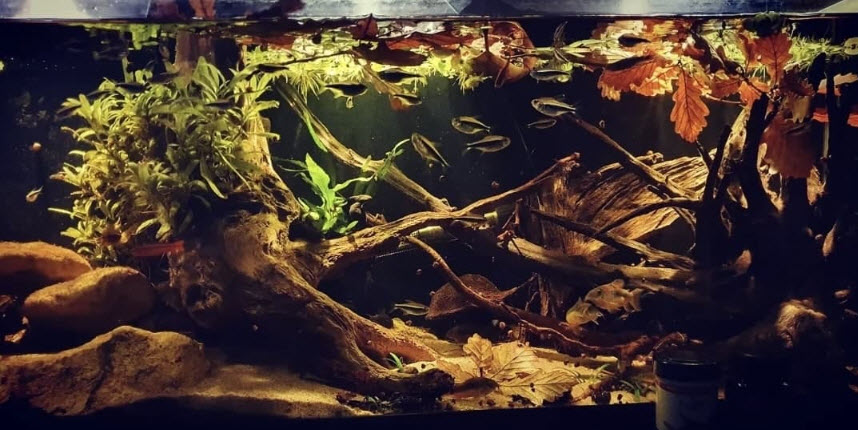
Types of Blackwater Biotopes
There are several variables in a blackwater biotope: the acid creating the blackwater, the “realism” of the blackwater, the ”style”, and the organic loading. There are three major types of blackwater aquariums:
- “real” blackwater biotope
- “decorative” blackwater aquarium
- “botanical style” blackwater aquarium
The “real” blackwater biotope is where everything including the pH is as close to the native conditions as possible. This type of blackwater aquarium uses humic substances to create the color. The humic substances are generally derived from black peat.
The “decorative” blackwater aquarium is where the dark color is only for decoration. This type of aquarium can simply use straight tannic acid to achieve the color. Most hobbyists simply use certain woods like bog wood and mopani wood to create a brown tannic acid filled aquarium water.
The “botanical style” blackwater aquarium refers to the use of large amounts of botanicals, i.e. something like Indian almond leaves, to achieve an effect of a detritus filled “natural” aquarium.
Note that because the “decorative” and the “botanical styles” uses tannic acid rather than humic acid so they DO NOT duplicate a “real” blackwater biotope.
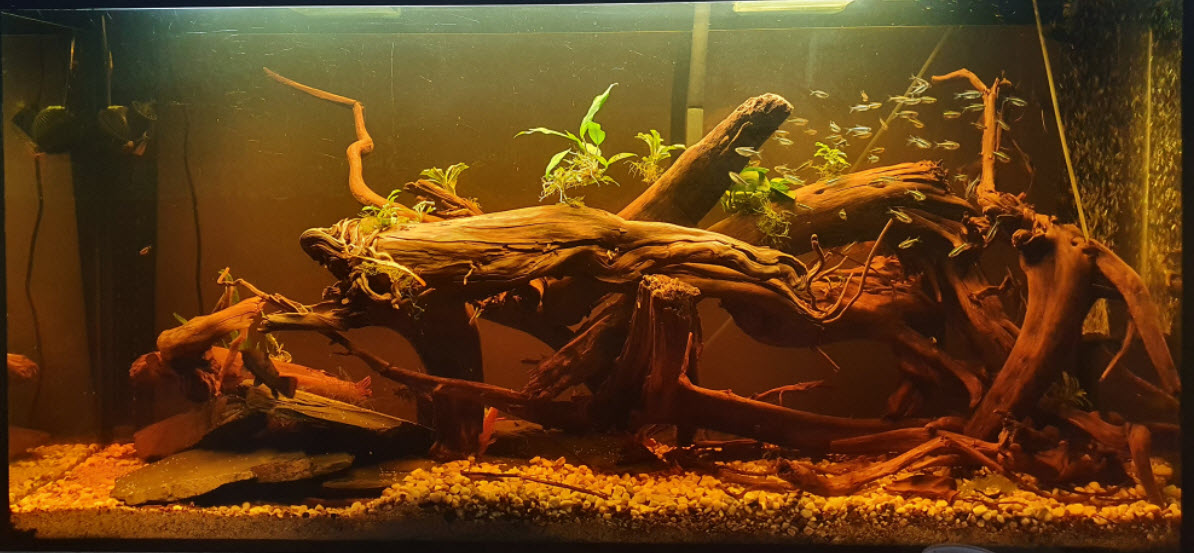
The “Real” Blackwater Biotope
In order to duplicate Blackwater as closely as possible one needs several elements: a very soft, pure water with TDS below 70, a pH below 6.5, and humic substances (not tannic acid) forming the color
To create a genuine Amazonian acid aquarium one needs to start with reverse osmosis (RO) water or distilled water. Take the TDS up to 40 to 50 with any form of sodium chloride salt (“table salt” does NOT create any problems with ANY fish). Then adjust the pH to where one wants it. Note this isn’t easy. A pH between 6.0 and 7.0 is very unstable and prone to drifting in just a few hours’ time.
Technically, if one wants a biotope that duplicates the Orinoco or Rio Negro blackwater exactly, one needs to use mesh bags filled with “black peat” to add the humic substances to the water.
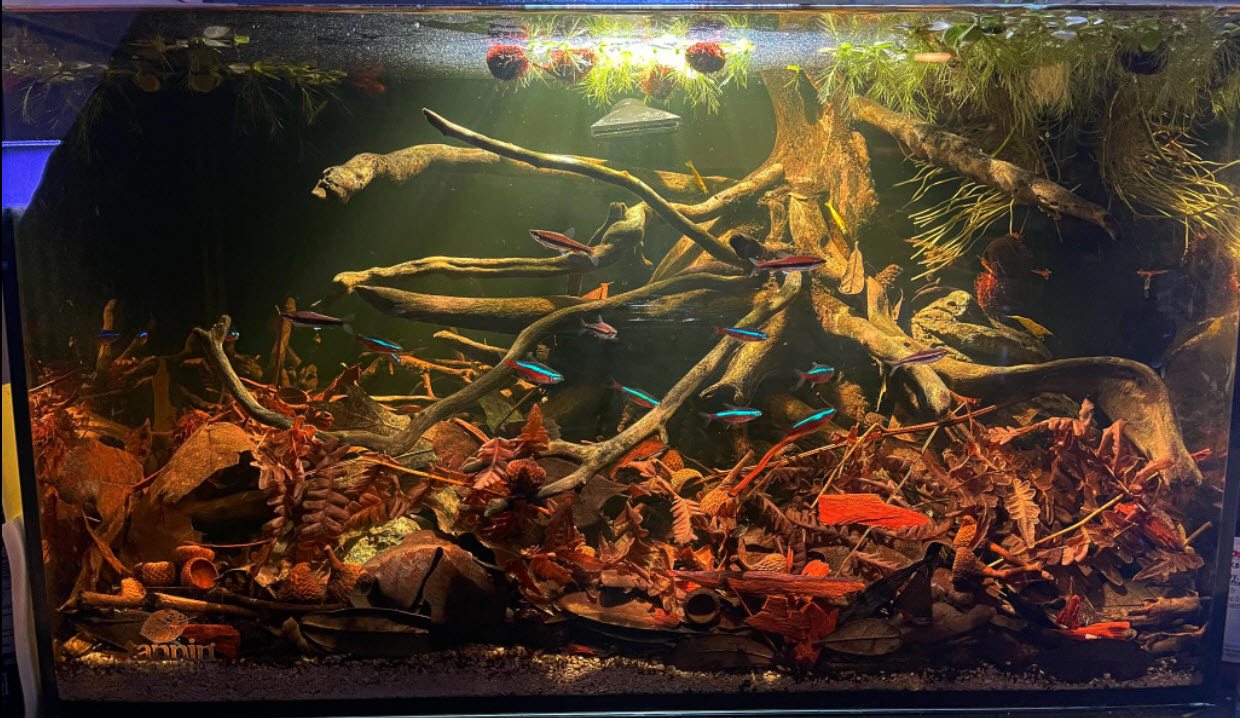
Note that true black peat is essentially just humus, with the carbohydrates long gone. But some “manufactured” peat has wood in it to make it cheaper. Wood is a carbohydrate and can create problems in the aquarium. Note I can’t say as I like using any “peat” simply because there is no way to know how the “manufactured” peat has been made or what it consists of.
There are some products like Fluval Aquatic Peat Granules made for aquariums. This product is peat moss, not peat. As such it contains a lot of carbohydrates. And this can possibly create problems in the aquarium. Sera Super Peat and Ehieim “Torf” appear to be the same thing.
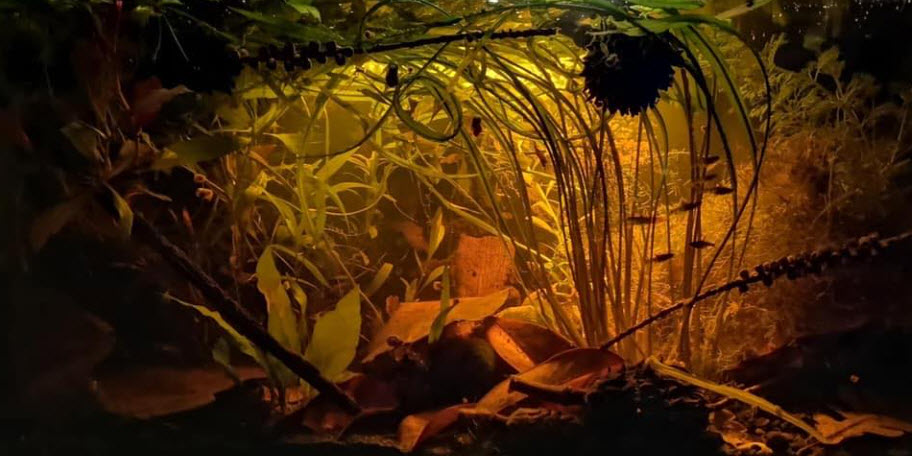
The Decorative Blackwater Aquarium
Tannic acid is the same color as humic substances if one only wants the color. For a “blackwater tank” that meets the bill for most biotope fish aquarium shows we recommend winemakers tannic acid. Tannic acid is stocked at wine brewing websites (tannic acid is used to flavor some red wines). The pure wine tannic acid is a lot easier to control and use and it won’t cause bacterial counts to rise. Just add the acid to the tank till the desired color is reached.
Technically the acids in true blackwater is humic substances, not tannic acid. But even the savviest of the biotope perfectionists don’t seem to know that. As long as the tannic acid isn’t too dark (tannic acid is toxic to fish in extremely dark colorations, above 40 ppm) it will fill in just fine for humic substances.
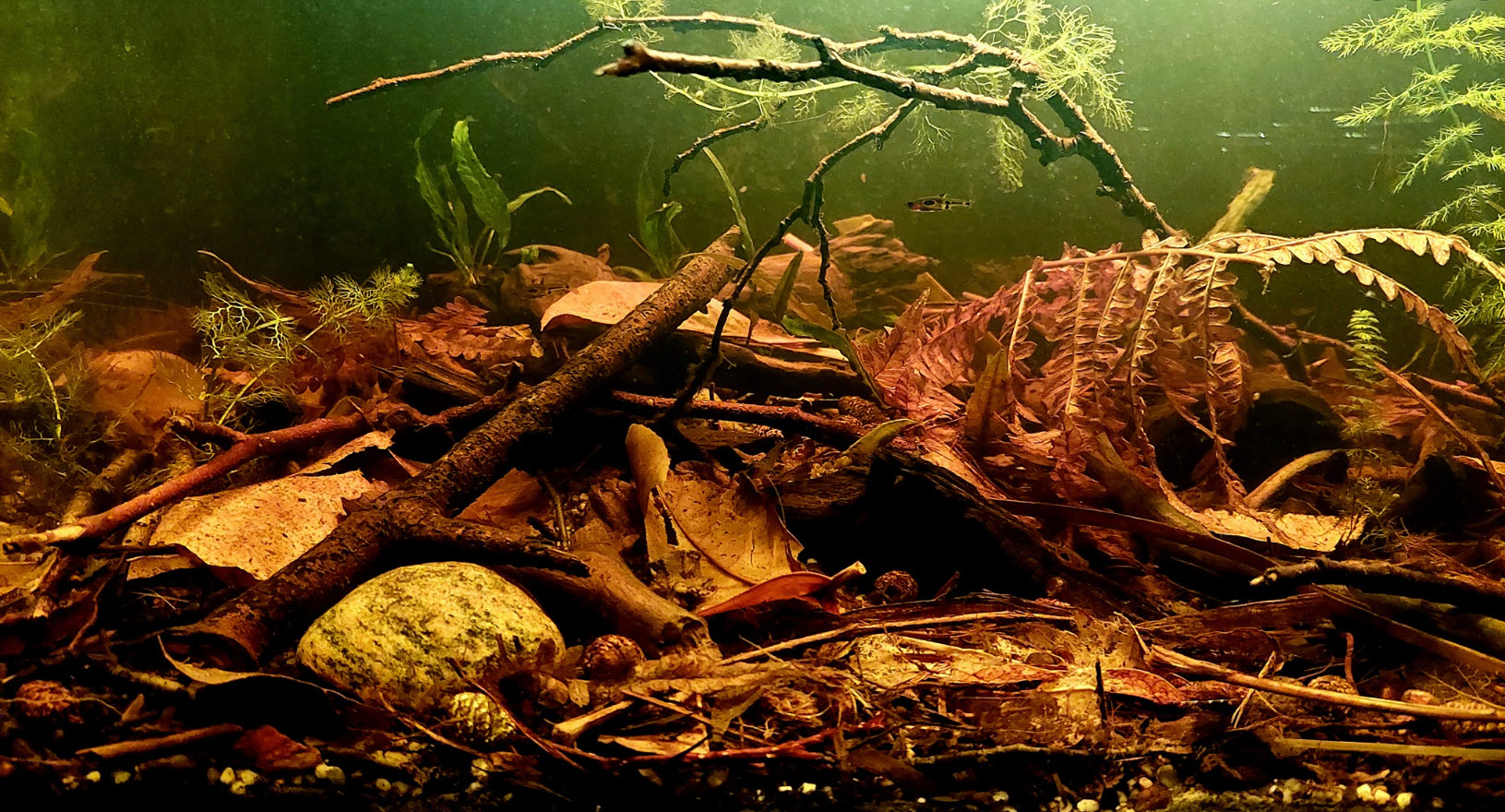
The “Botanical Style” Aquarium
The “botanical style” blackwater aquarium refers to the use of large amounts of botanicals, i.e. something like Indian almond leaves, to achieve an effect. The word “style” implies an aesthetic rather than a methodology.
To achieve this type of aquarium one loads the aquarium with a lot of something like Indian almond leaves and lets them decay. The resulting detritus is simply left in place to create a “realistic” aquarium that looks like a pond might look in the Amazon basin. Not something I like but some love the aesthetic. “To each his own”.
I’m not a big fan of the “botanical” approach since “natural” products which have tannic acid (Indian almond leaves, alder cones, oak leaves, tea leaves, and other organic materials) are not good for fish (contrary to popular social media mythology).
Excess organics like Indian almond leaves should be avoided as the carbohydrates in these materials cause an increase in the bacterial count of the water. Blackwater fish do not do well with high bacterial counts in the water. Many of these leaves, such as Indian almond leaves, also have oils in them which can create problems with aeration in the aquarium.
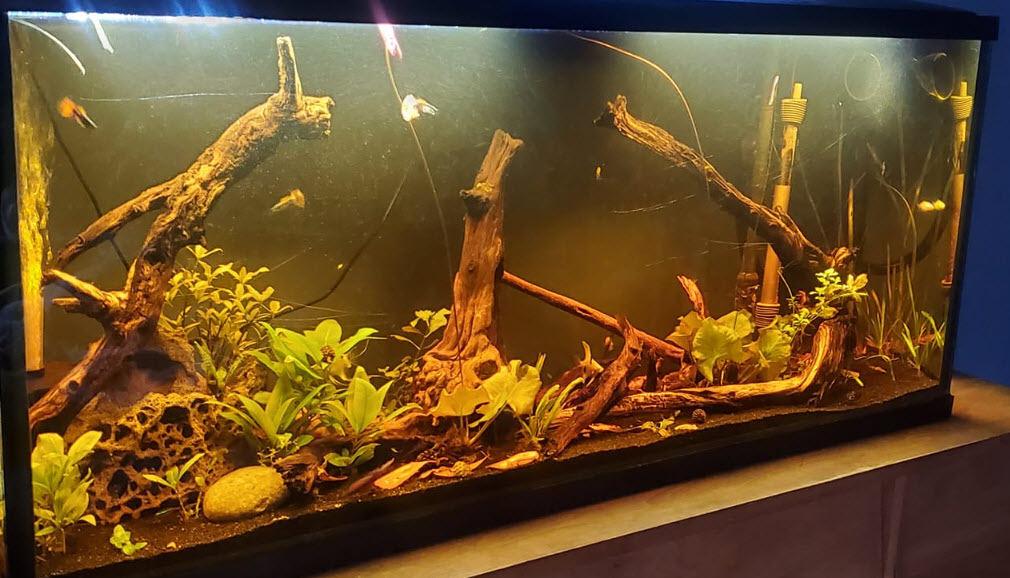
The Acid Aquarium
Duplicating a blackwater biotope requires a low TDS, low pH water. This type of water is inherently unstable and prone to drifting. TDS should be down about 60 and pH should be about 6.0-6.5.
Note that pH should be measured first thing in the morning before the light has been on for more than a few minutes. And the measurement should be taken with a pH meter, not with the API liquid “low” pH test kit (the test kit only measures between 6.0 and 7.2). And be sure to store the pH metering in the storage solution and recalibrate the meter once a month or so.
The pH of most RO will be down around 6.5 to 6.8 because of carbon dioxide dissolved in the RO water. And distilled water will run 6.5 pH if left open to the air. Use the salts sodium bicarbonate (baking soda) to raise pH and monosodium phosphate, also known as monobasic sodium phosphate and sodium dihydrogen phosphate, to lower the pH.
Make up dilute solutions with distilled water. One-half teaspoon of the salt in one liter (half a quart) of water is fine. If pH is outside 6.0 to 6.5, add a half teaspoon or so of this solution, then wait a day and see what happens. After a while, one will get a “feel” for the amount needed, which is something that will vary according to the salts that naturally occur in the water and the nitrate levels.
And note that a pH below 6.0 will stall the cycle. But the decaying Indian almond leaves will incorporate the ammonia from the fish into protein filled detritus, so ammonia often is NOT a problem even at very low pH in a leaf filled aquarium.
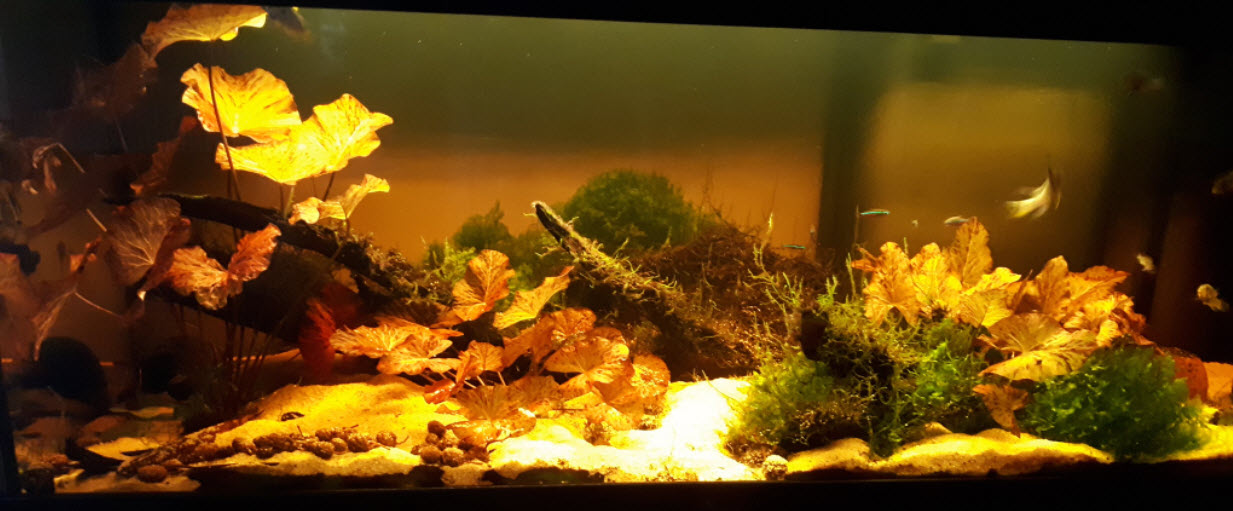
“Crashing” an Acid Aquarium
An acid pH is not stable. If nitrates and organic acids accumulate, the pH can drop very fast down into the 4.0 to 6.0 range. This CAN SOMETIMES result in what is known as a “crash”.
Keeping fish in soft acid water (RO water with a pH less than 6.5) is more challenging than keeping fish in even slightly alkaline hard water (typically pH greater than 7.5, GH greater than 3, and KH greater than 1). The reasons for this have to do with the way nitrates and DOCs can cause a rapid chemical and biological cascade in acid water. This cascade occurs as follows:
- The nitrates and dissolved organic compounds (DOCs) get out of control for a variety of reasons
- Because there are no alkaline buffers (sodium, calcium, and magnesium carbonates) in acid water the acidity rapidly drops. (nitrates are inherently acid and DOCs acidify water)
- Because the acidity drops the nitrifying bacteria stop working.
- The total ammonia (relatively harmless ammonium in this case) levels start rising exponentially (unless absorbed into detritus)
- Nitrite becomes very poisonous at low pH.
- The fish start having problems of various sorts, in some rare cases even dying.
This is known as a “crash” to experienced acid water aquarists. It is thus desirable to keep a close eye on pH, ammonia, nitrite, and nitrate with acid water.

Old Tank Syndrome is gone into in more depth in the following link:
18.6. Old Tank Syndrome
We should make one note on low pH and “beneficial bacteria”. There is a type of “beneficial bacteria” which grows at low pH called archaea. But this type of organism (which technically is not a bacteria) is extremely slow growing. So an acid tank will take four months to two years to “cycle” successfully.
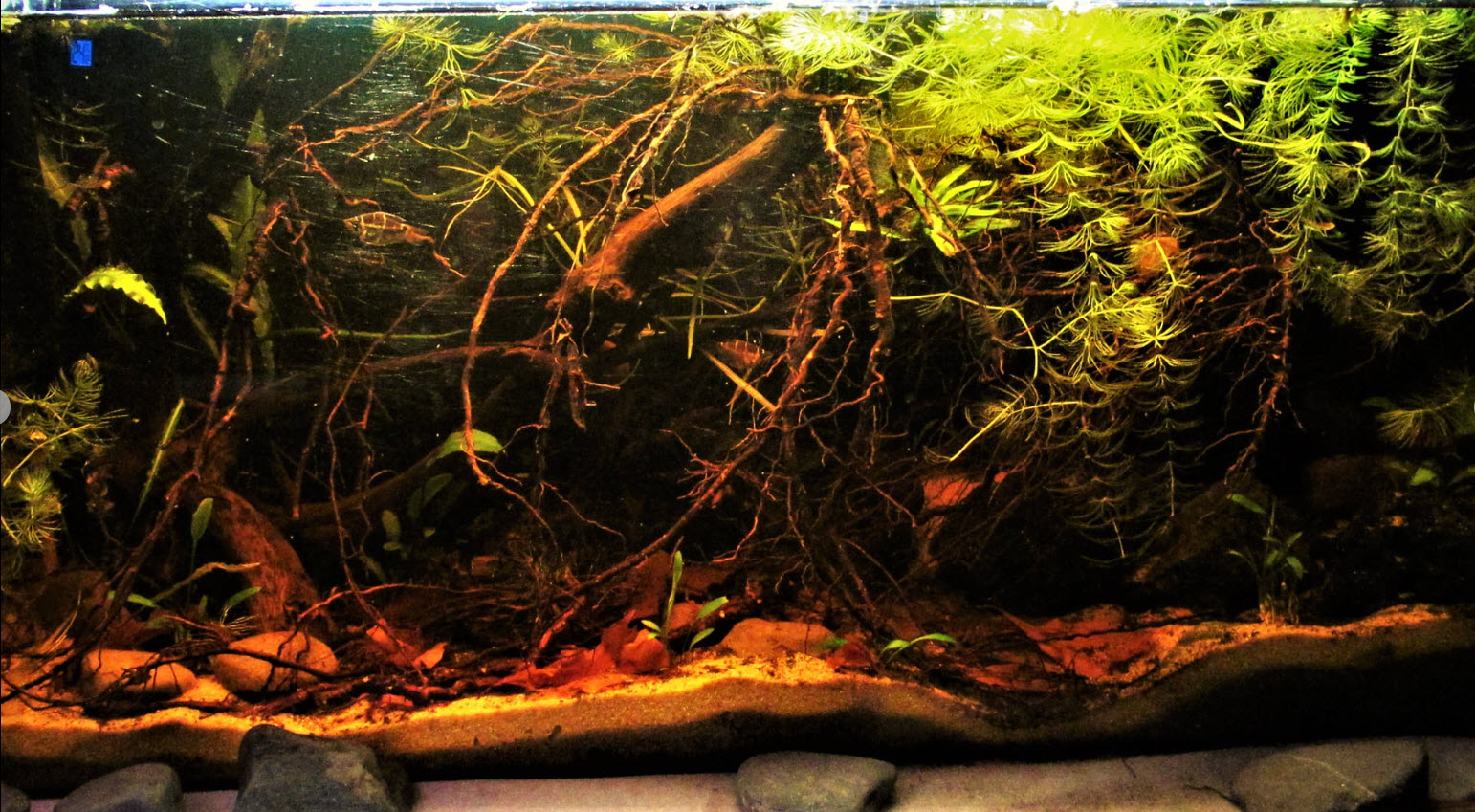
“Why did All my New Fish Die?”
Note that acid aquariums are touchy in another regard. It is part of “Old Tank Syndrome”. When nitrate levels go high and one has a gradual drop in pH and an increase in ammonia and nitrite, even blackwater fish have an uncanny ability to adapt to the new conditions. It is like an alcoholic’s liver getting better at metabolizing alcohol.
But introduce a new fish or fish to that aquarium and they will often just roll over and die. You constantly hear on forums “Put in four new fish yesterday and today all four are dead. But my regular fish are fine. What happened?” This is sometimes old tank syndrome and old tank syndrome is very common with aquariums that are kept on the acid side.
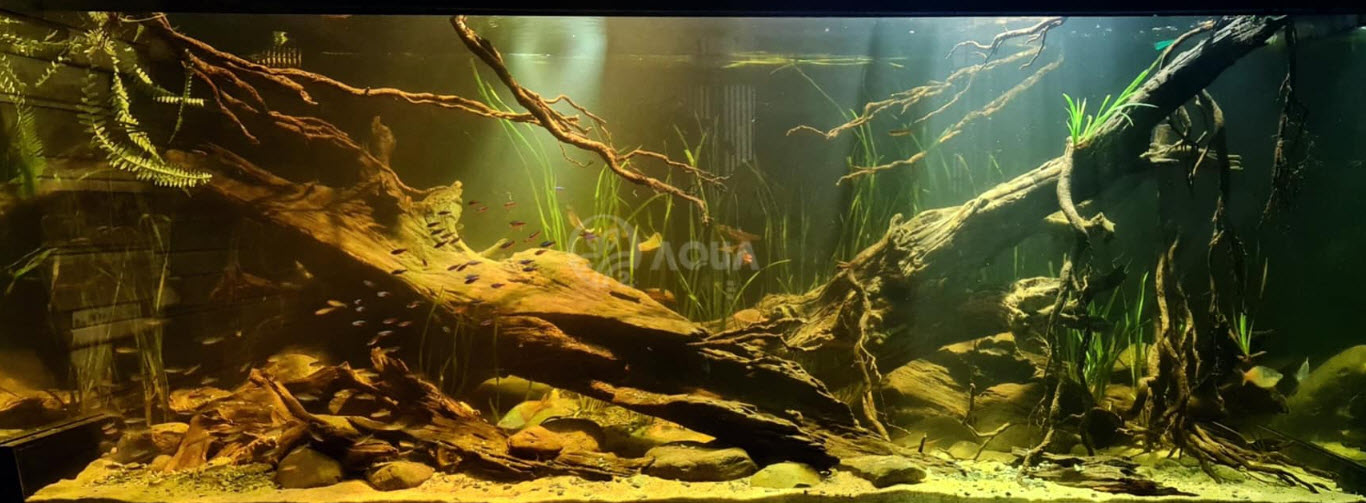
Further Reading
More can be found about biotopes at this article:
17.2. Biotopes
And these are links to keeping specific fish:
17.3. Blackwater Fish
.
Return to Fish Selection Menu
.
Aquarium Science Website
The chapters shown below or on the right side in maroon lead to close to 400 articles on all aspects of keeping a freshwater aquarium. These articles have NO links to profit making sites and are thus unbiased in their recommendations, unlike all the for-profit sites you will find with Google. Bookmark and browse!
.

Orlando says
Hi. Thanks for the article.
I have one question. Does not the acidic decomposition of leaves and other vegetable materials release humic and fulvic acids?
Do you really need to add humus to the aquarium? Because as far as I’m aware, the decomposition of vegetable material will induce the production of microorganisms like protozoa and bacteria?
Fabio says
If nitrates are inherently acidic, can alkaline buffers react with nitrate by reducing the ppm value in the water?
Fabio says
And note that a pH below 6.0 will stall the cycle. But the decaying Indian almond leaves will incorporate the ammonia from the fish into protein filled detritus, so ammonia is often NOT a problem even at very low pH in a leaf filled aquarium.
How do Indian almond leaves incorporate ammonia? Does this only occur with this leaf or with other leaves as well? Does this only occur at pH below 6? If so, is it because at pH higher than 6 the bacteria will take over the ammonia before the leaves can incorporate it?
Fabio says
If bacteria cannot thrive in this type of water, then how is the decomposition of plant remains into humic and fulvic acids carried out? Is it a decomposition without the action of bacteria?
Fabio says
Activated carbon removes tannins. But if humic organic acids are what cause the color in the water, would activated carbon be able to clear the water in a Blackwater aquarium?
Dave says
In reply to Steve …. I have never seen anything one way or the other so I do not know.
Stevo says
Hi Dave, will a UV steriliser kill the ‘humic substances’ in a blackwater tank?. (with them being organic and all).